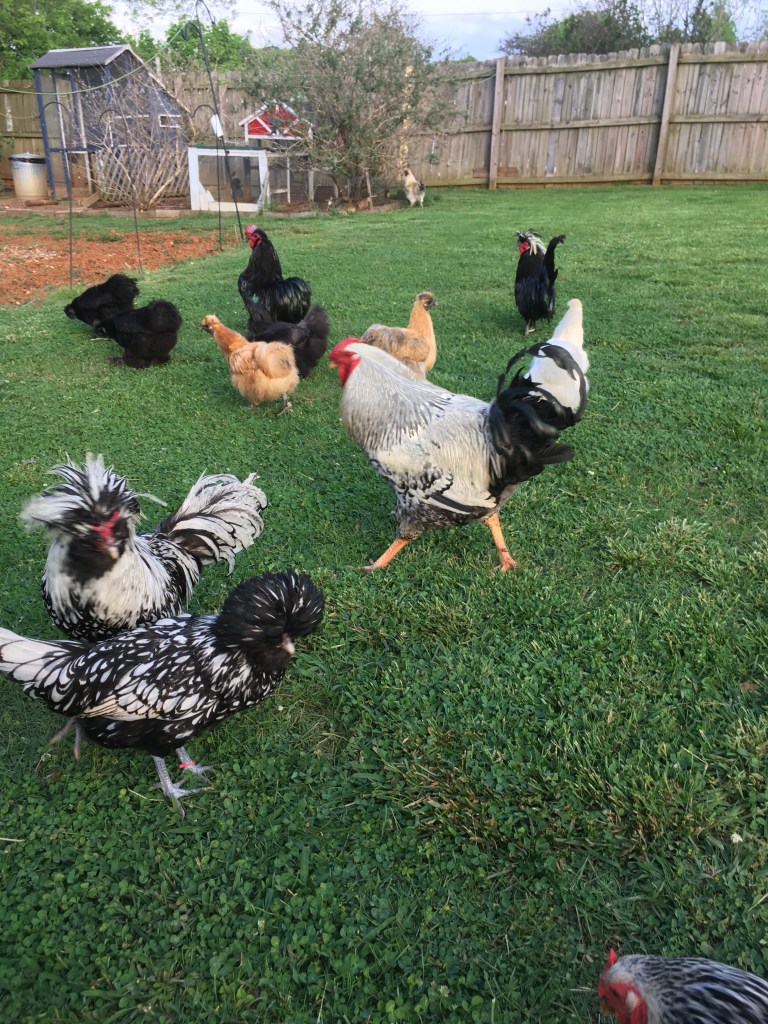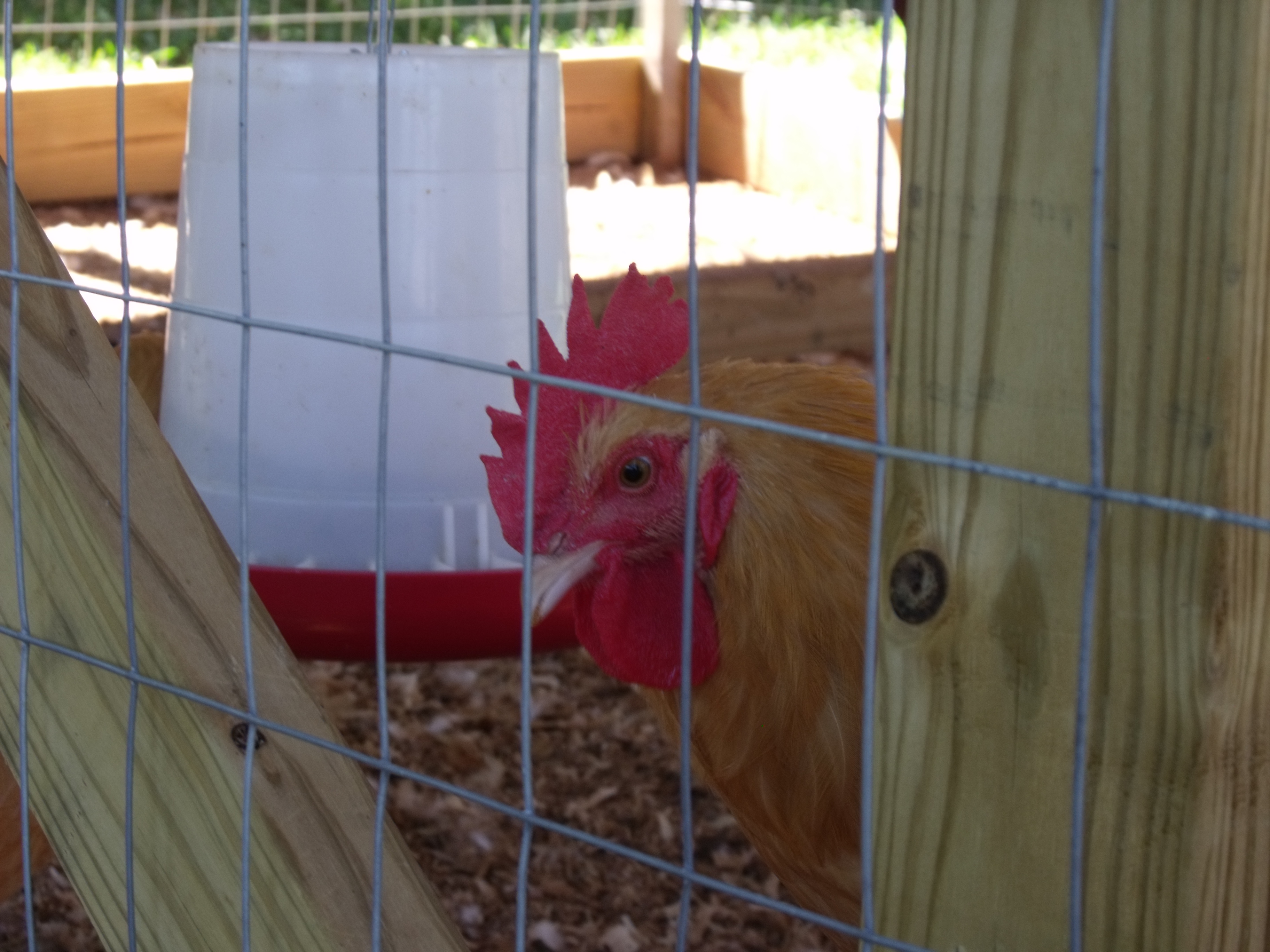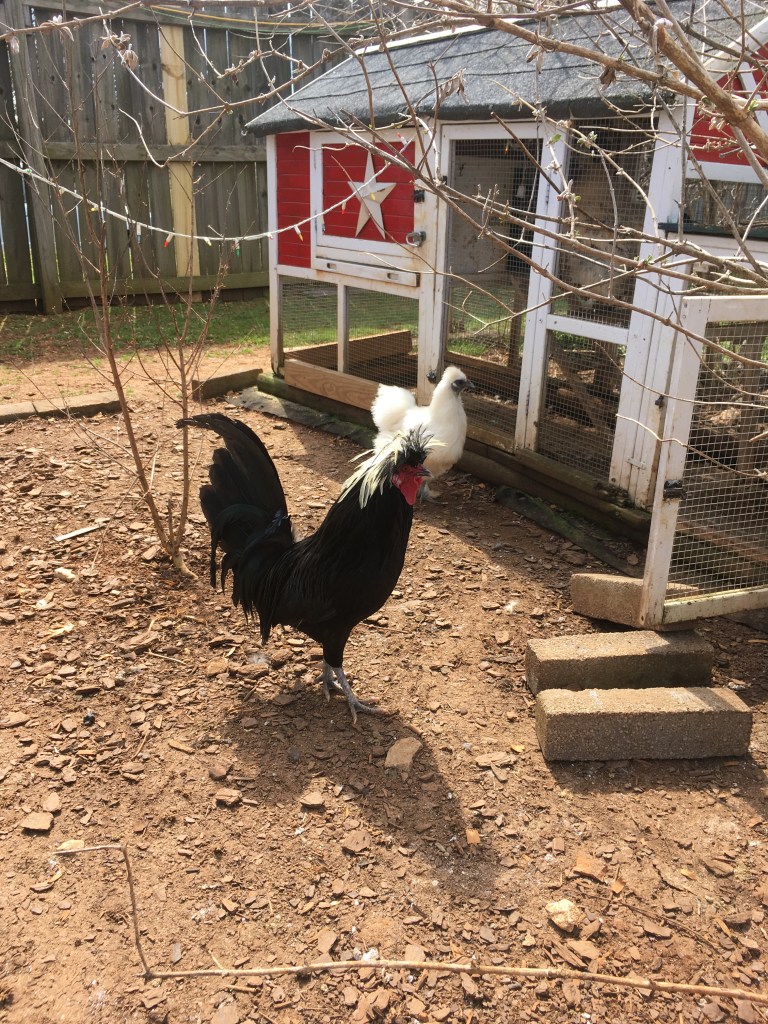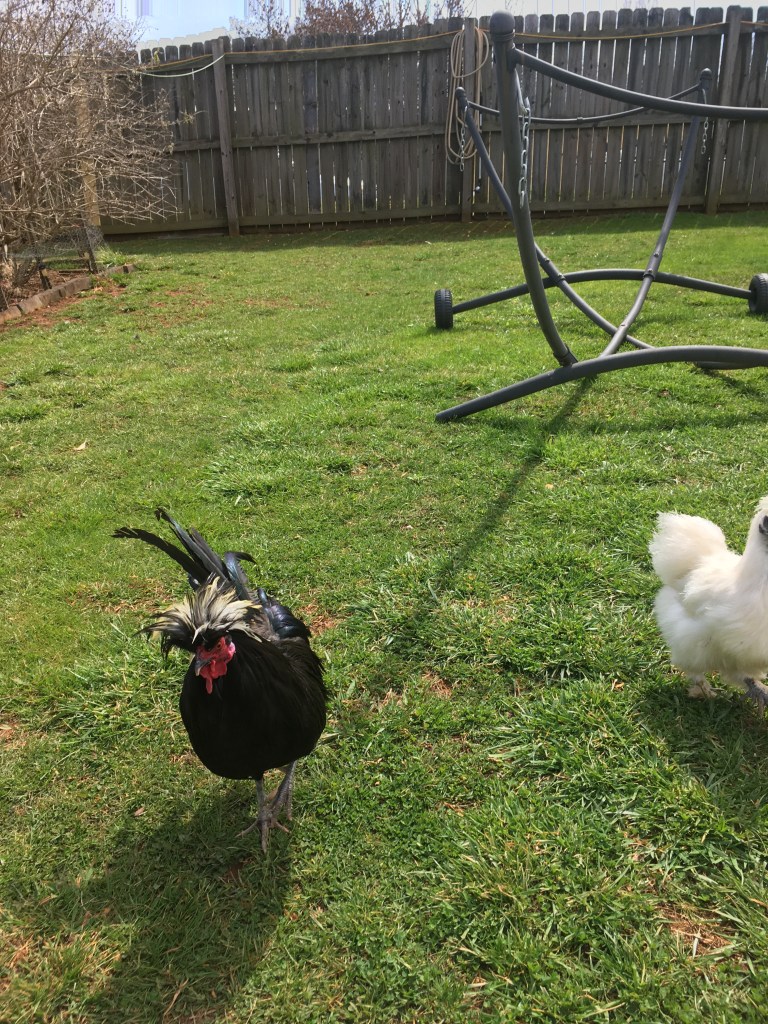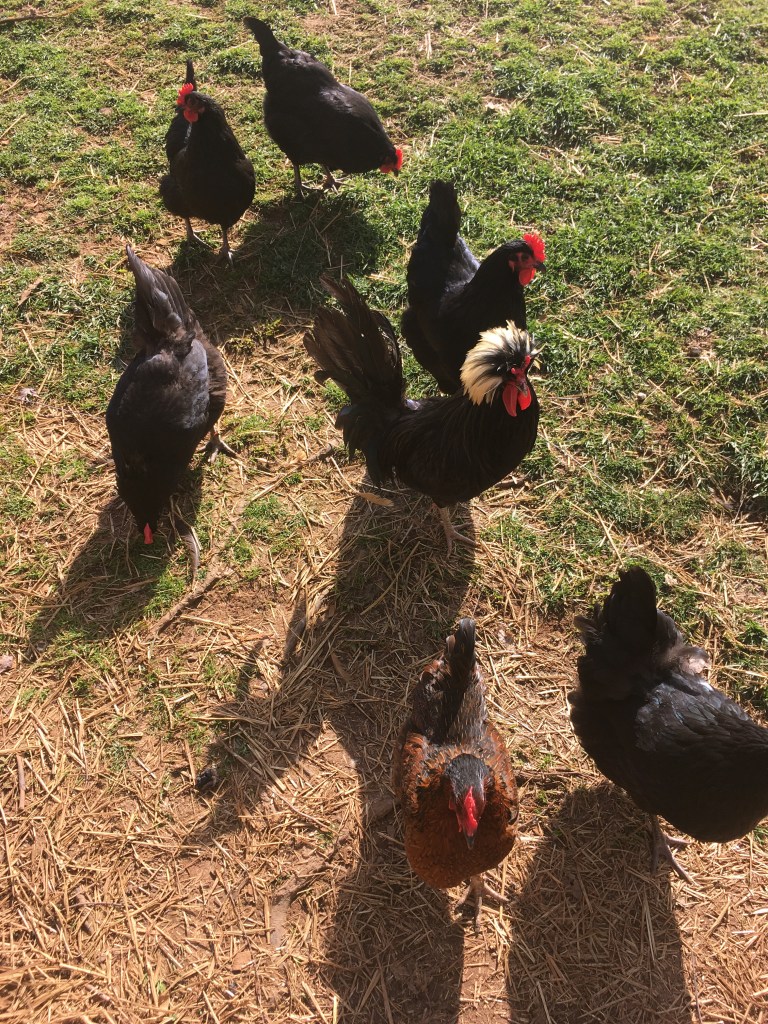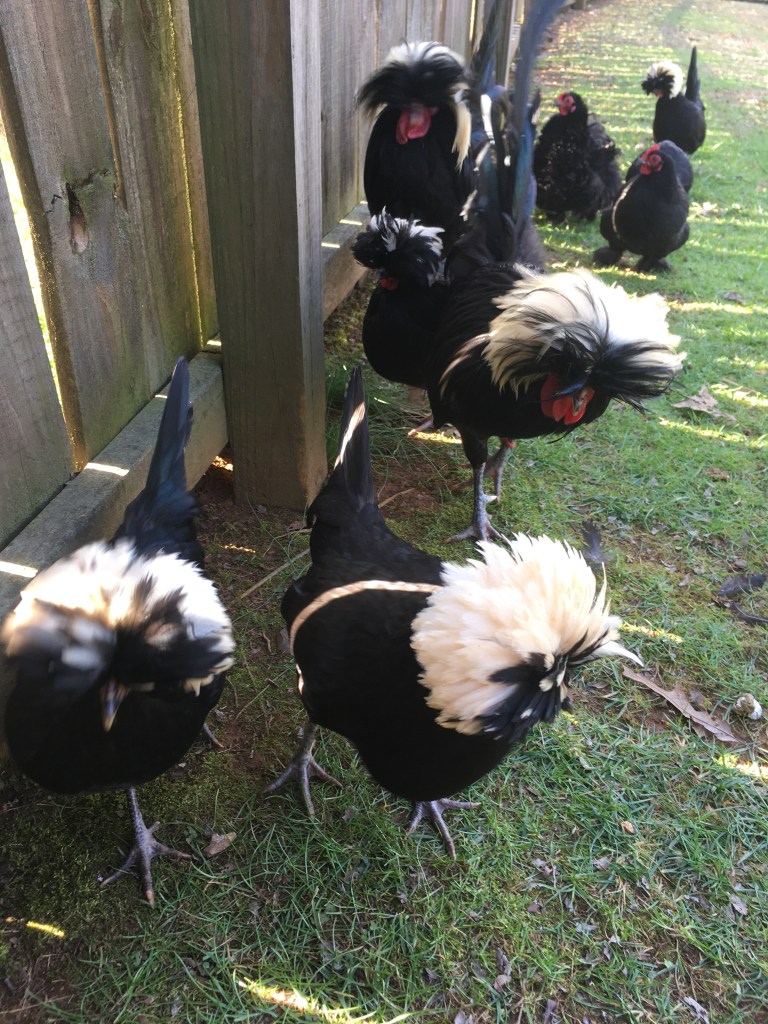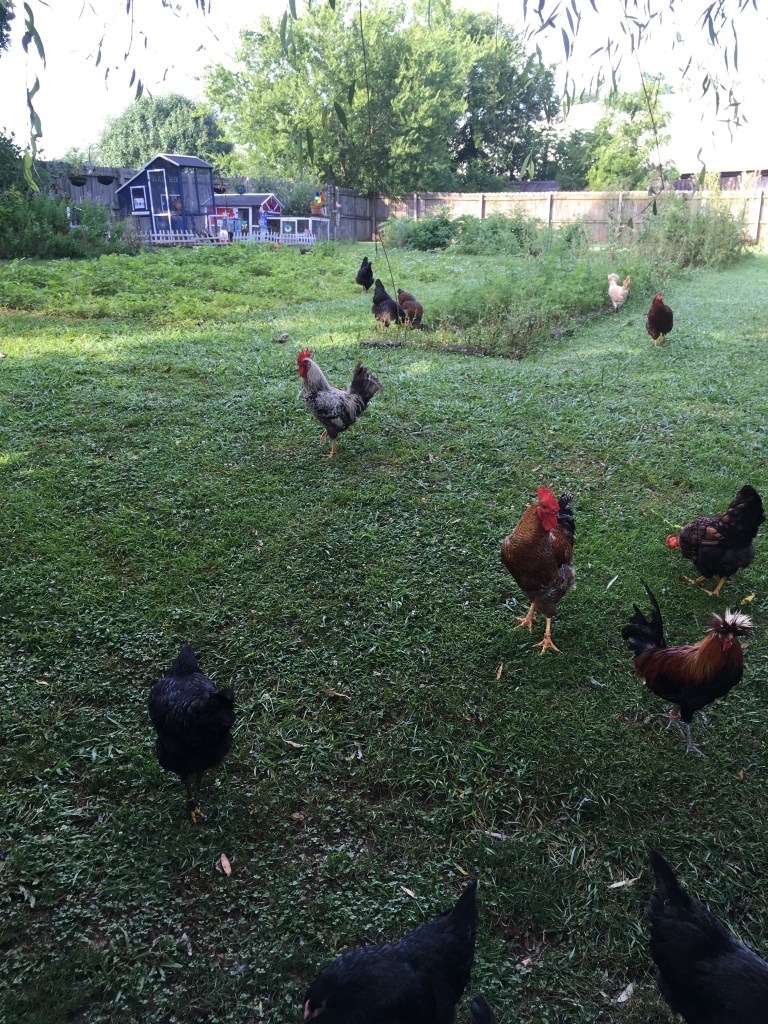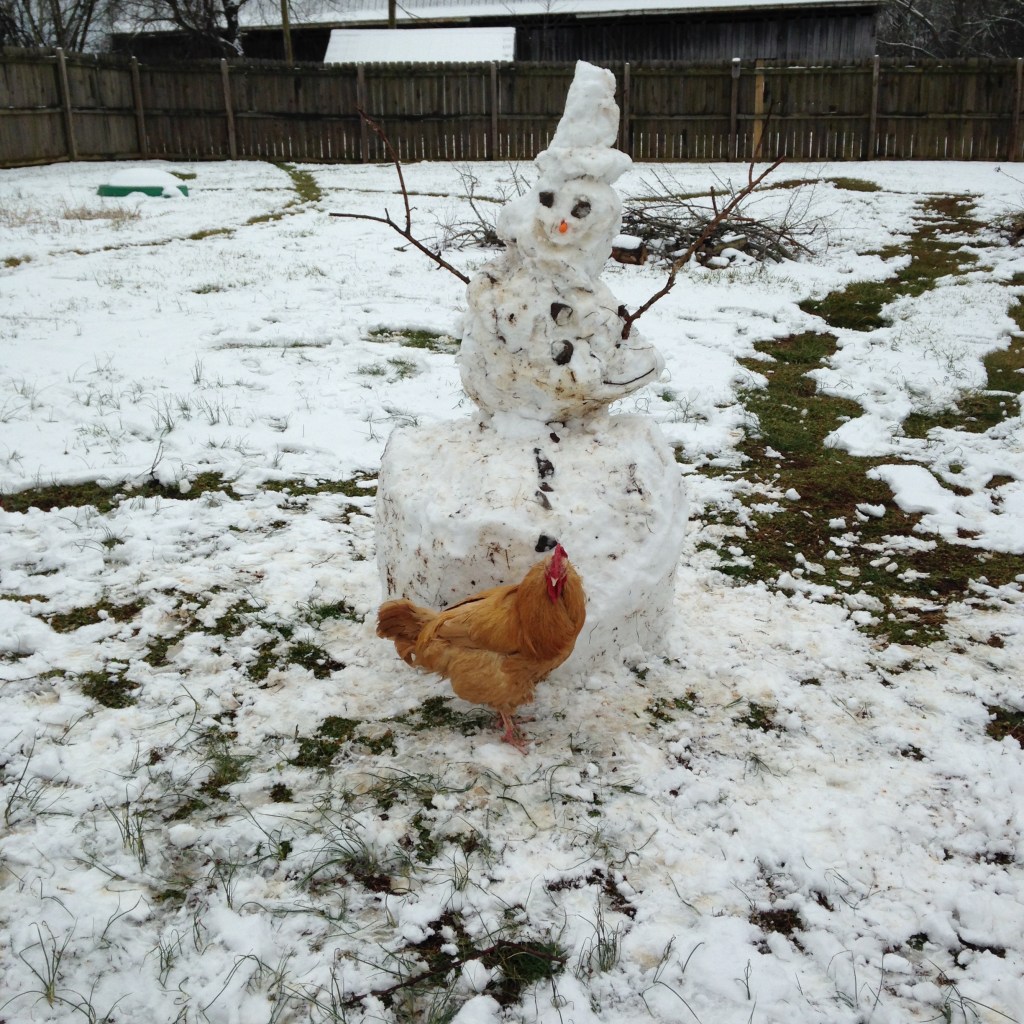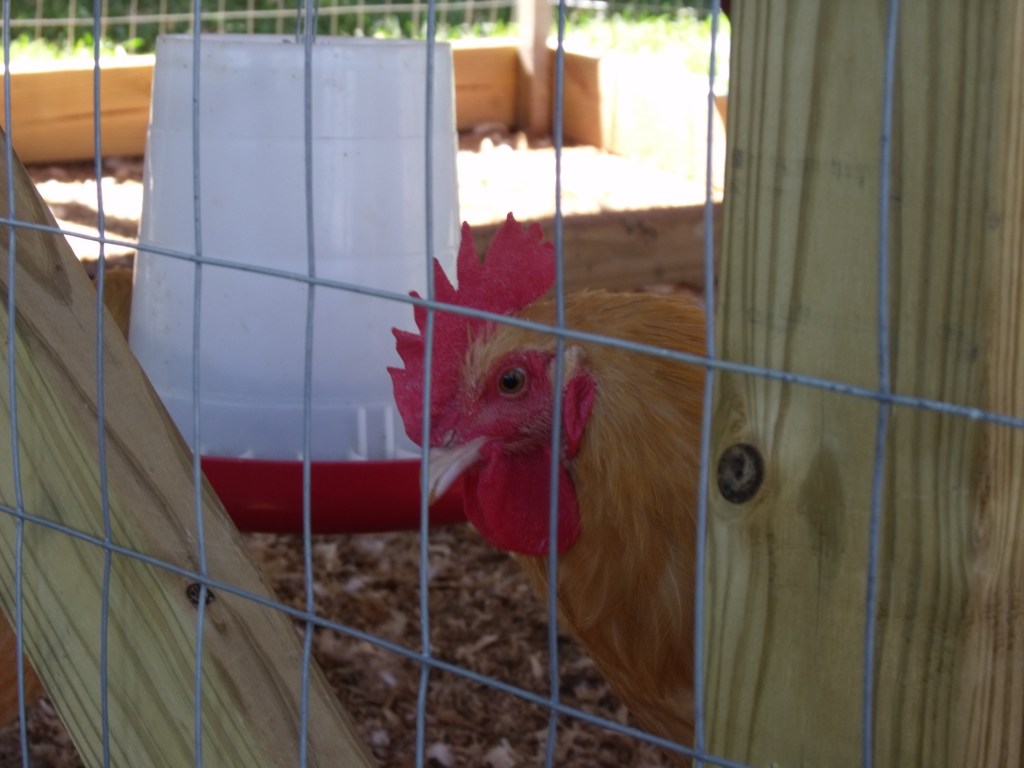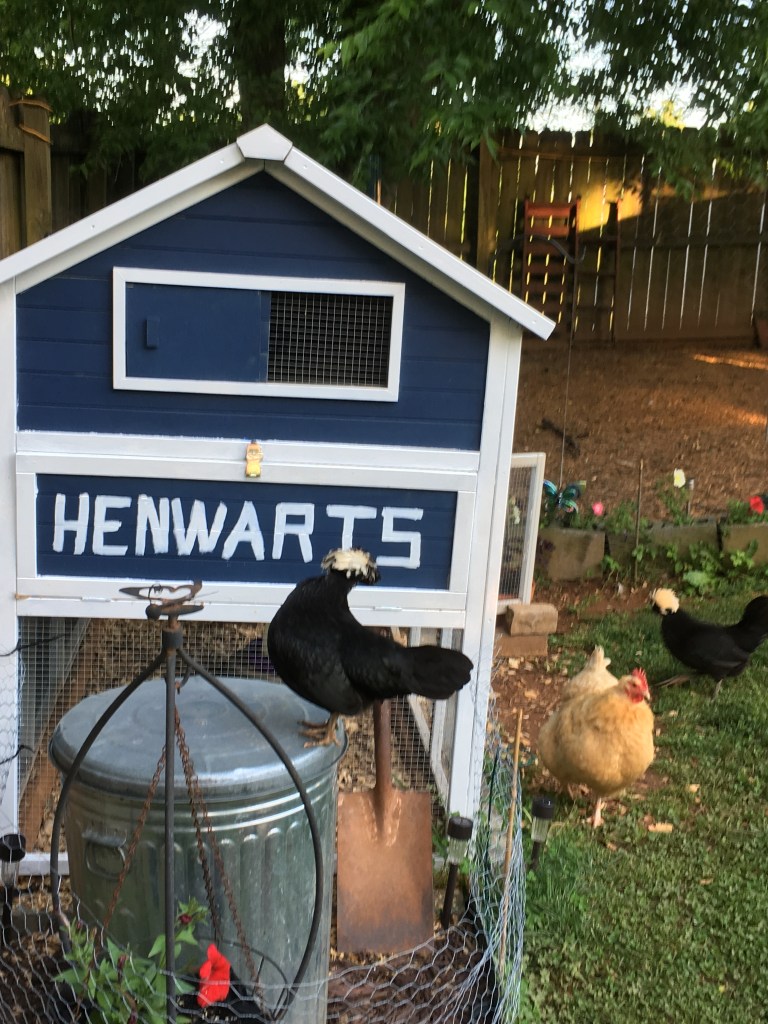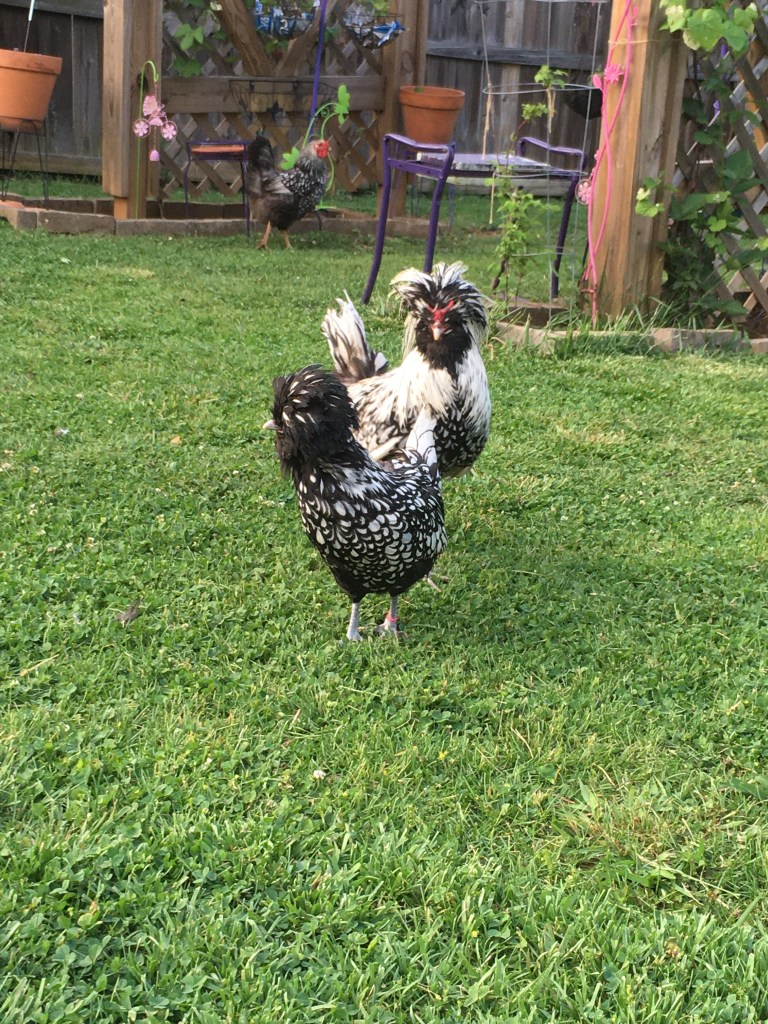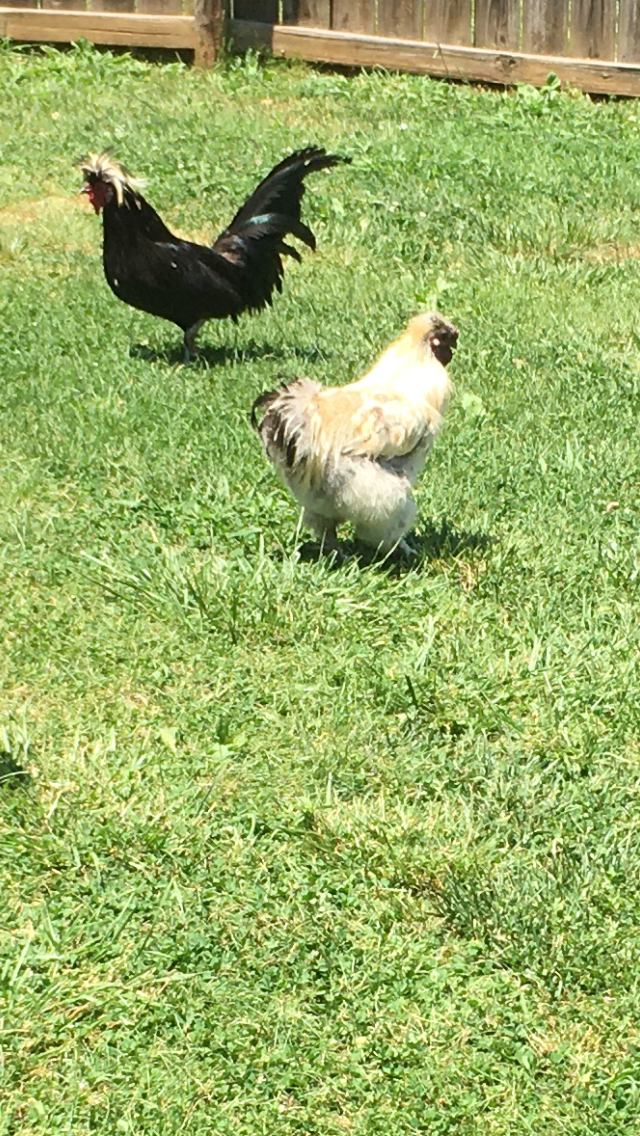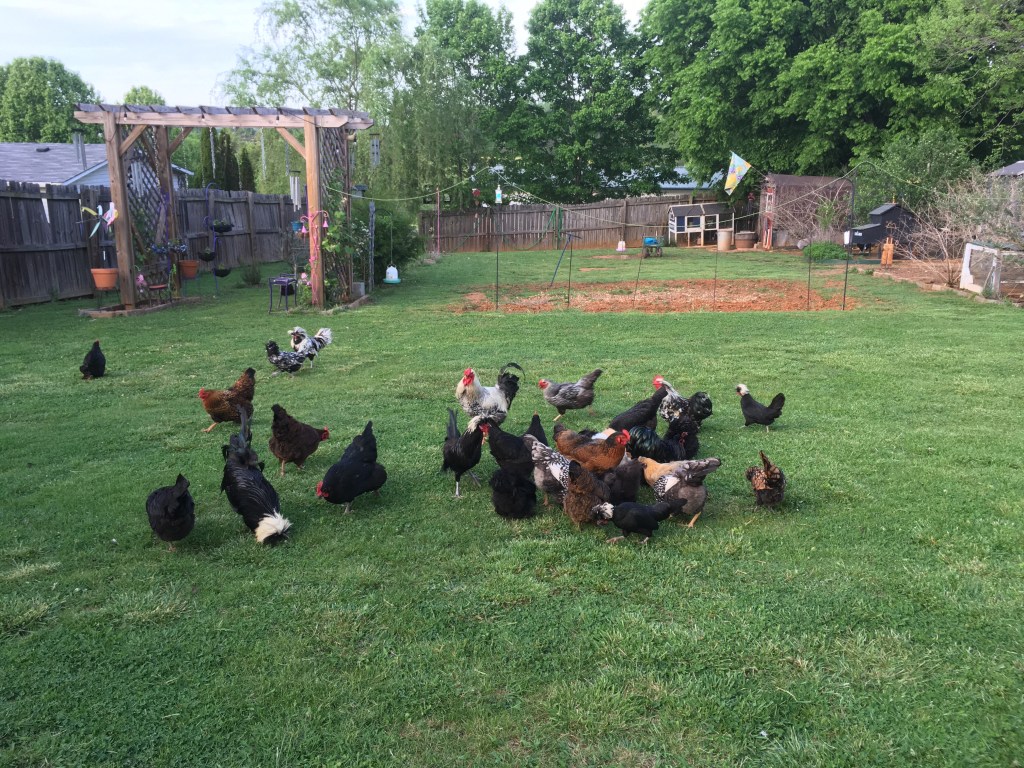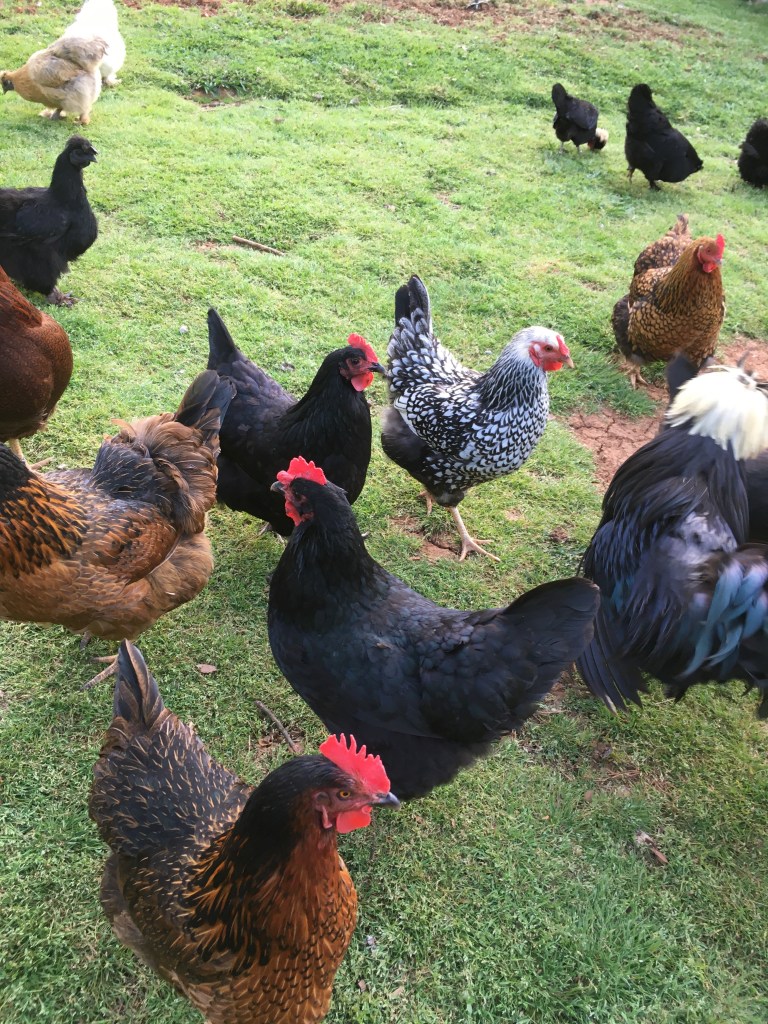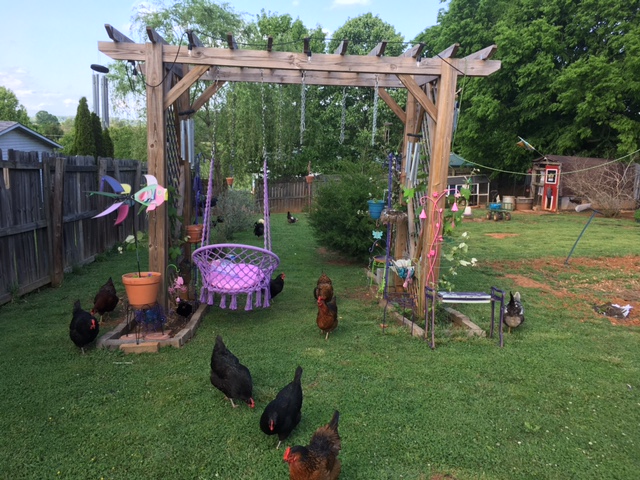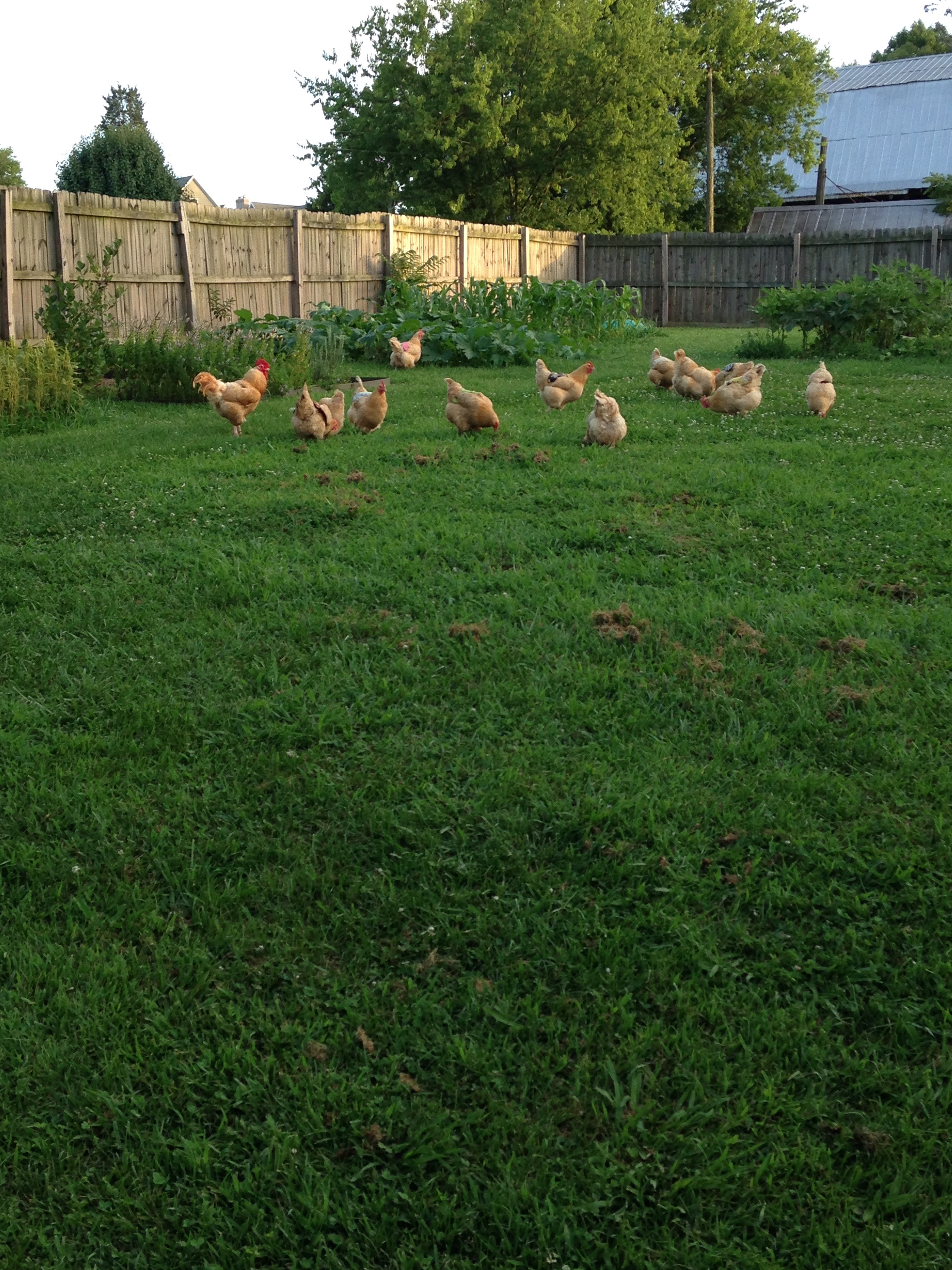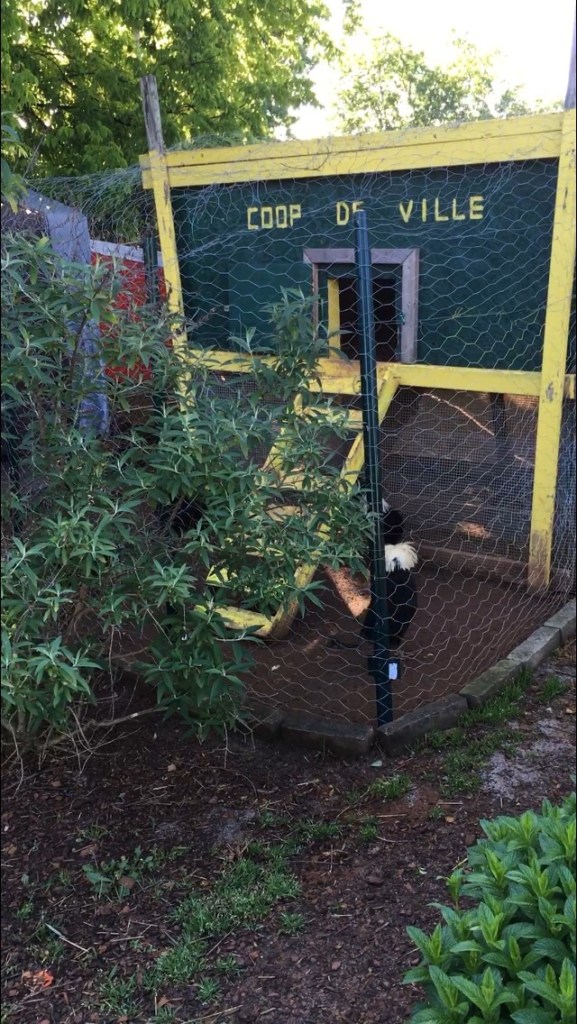
My Favorite Rooster Breeds.
When acquiring a backyard chicken flock, most people opt for a flock of ladies. But for those who want a rooster or two, but are apprehensive as to which breads are best, this post is for you.

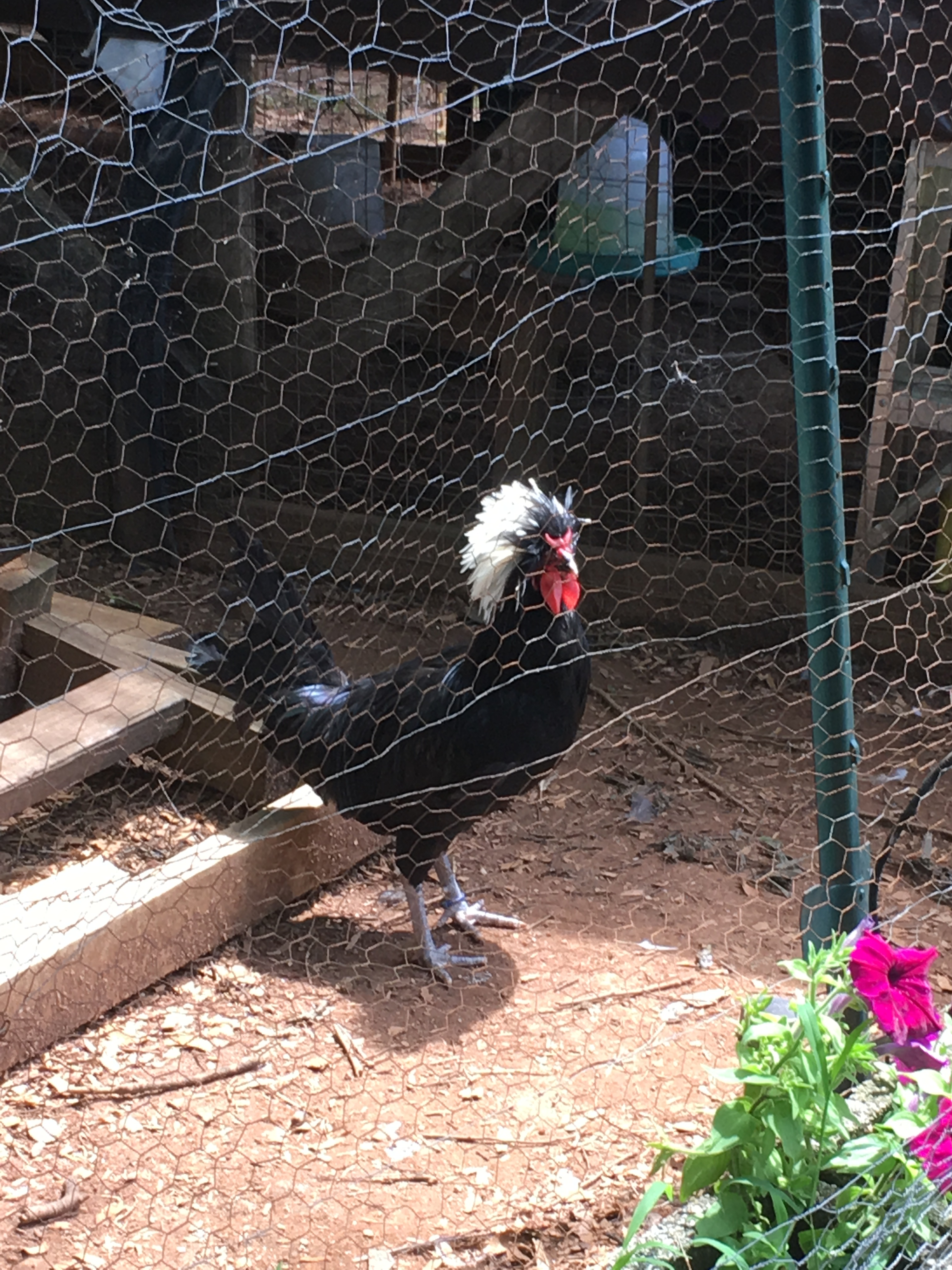

My flock total clocks in at around 50-60 birds (according to chicken math), 30-40 or so hens, and 13 roosters. Half of the gents’ free range with the girls, the rest reside in a bachelor pen. A bachelor pen is a coop/pen assigned to house just roosters. There are no hens in a bachelor pen. Contrary to the prevailing opinion, roosters can and do cohabitate well together. However, there are some tricks to successfully house roosters together. To see how I use and manage a bachelor pen, click here.

I have three large coops that house my girls,and within each of these dwellings, I have two roosters. These gents care for and protect the ladies while they are free ranging. That means, on any given day, I have 6 roosters in the yard with the ladies.
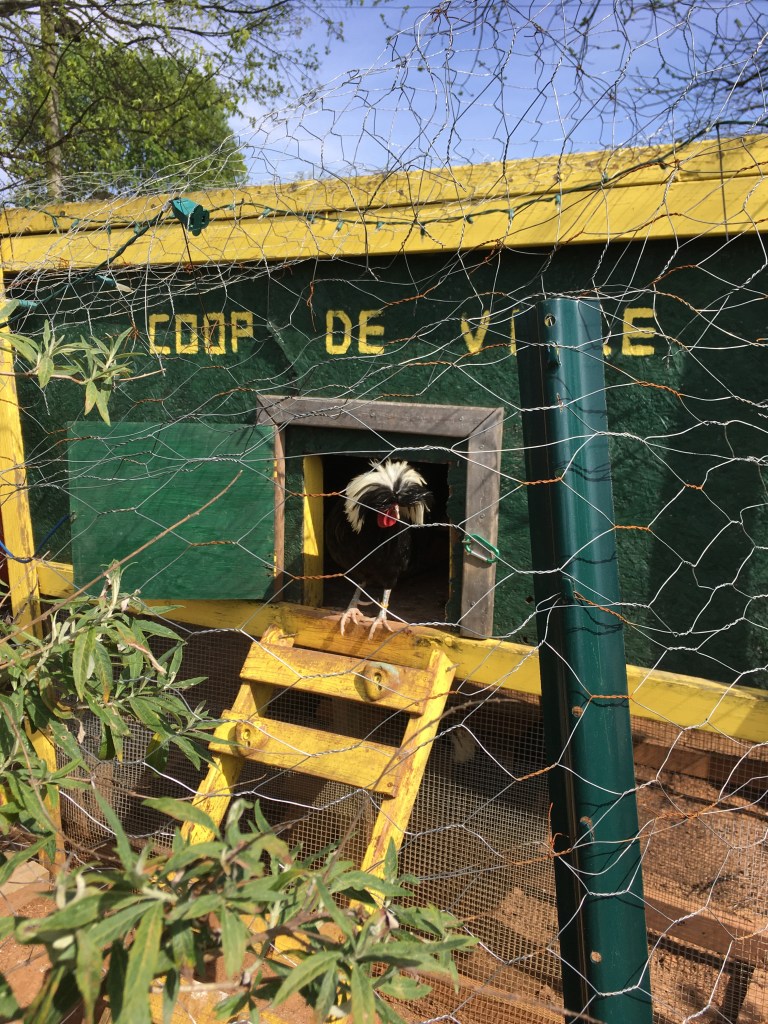
The roosters of yesteryear, which star in our nightmares, were often played by the game cock, according to today’s breeding standards. The rooster we met on our grandparents’ farm was very aggressive and for good reason. Our grandparents kept chicken to supply the family with eggs and meat, a defensive rooster was needed. However, many things have changed since our grandparent’s day.

The backyard chicken hobby has exploded, with chickens replacing the family dog in terms of popularity. Backyard chickens are quickly becoming the go-to for a backyard homestead. In the wake of COVID-19, everyone wants more control over their food supply. Backyard chickens have never been more popular than they are right now. Correspondingly, the breeding industry has responded. Hatcheries and breeders are selective breeding for behavioral/temperament traits such as calm, friendly, docile, and low-key. Most breeds today meet the needs of the backyard chicken hobby keeper. Gone is the bloodthirsty aggressive rooster that roamed our grandparent’s farm, meet the roosters of today.
Using my 13 roosters, I will provide a breed profile overview. I will highlight behavioral and temperment traits associated with common breeds developed for the backyard chicken keeper.
Buff Orpington:

The first breed that I will present for consideration, is the Buff Orpington. Orpingtons as a breed are known as the “Golden Retrievers” of the chicken world. Their demeanor is calm, friendly, and low-key. They are big balls of feathers, looking bigger than they are. My very first rooster was a Buff Orpington named Roy. Roy exhibited many of these behavioral traits; he was a gentle giant. In my presence, he was very calm and relaxed. He would beg me for treats that he could give to his ladies. He was in one word a gentleman. He was never aggressive towards me and took excellent care of the ladies.

One day I witnessed his heroic efforts to save my girls from a hawk. Prepared to lay down his life, he sounded the alarm. The ladies ran for cover, while he battled the hawk. Although injured, with love and care, he made a full recovery. I learned the true value of a rooster from this experience. After that event, Roy lived on for several more years as a decorated war hero. He sadly passed away 5 years ago. I never thought I would miss a rooster so much; he was my rooster teacher. He taught me a lot about chickens and the sacrificial nature of a rooster. Ever since Roy, I have fallen in love with roosters. Today, they are one of my favorite creatures, worthy of respect and admiration.
Cochin:


The next gent to introduce you to is Enigma. Enigma is a Mottled Cochin Bantam. Like the Orpingtons, Cochins are also big balls of feathers. The cochin is a very docile and friendly breed. The girls make excellent mothers, and the gents make excellent roosters. No bigger than he is, Enigma has established himself as the alpha rooster of the chicken yard, all the other guys answer to him. He is a very sweet rooster and takes very good care of his girls. He is calm around humans and will even allow me to pick him up for his health inspections without much issue. He too will beg me for treats that he can offer to his girls. He allows the girls to eat first, then if there is anything left, he will partake. When free-ranging, he will often follow me hoping that I can give him a morsel to take to his favorite lady. Out of all my boys, Enigma is my favorite.
Polish:


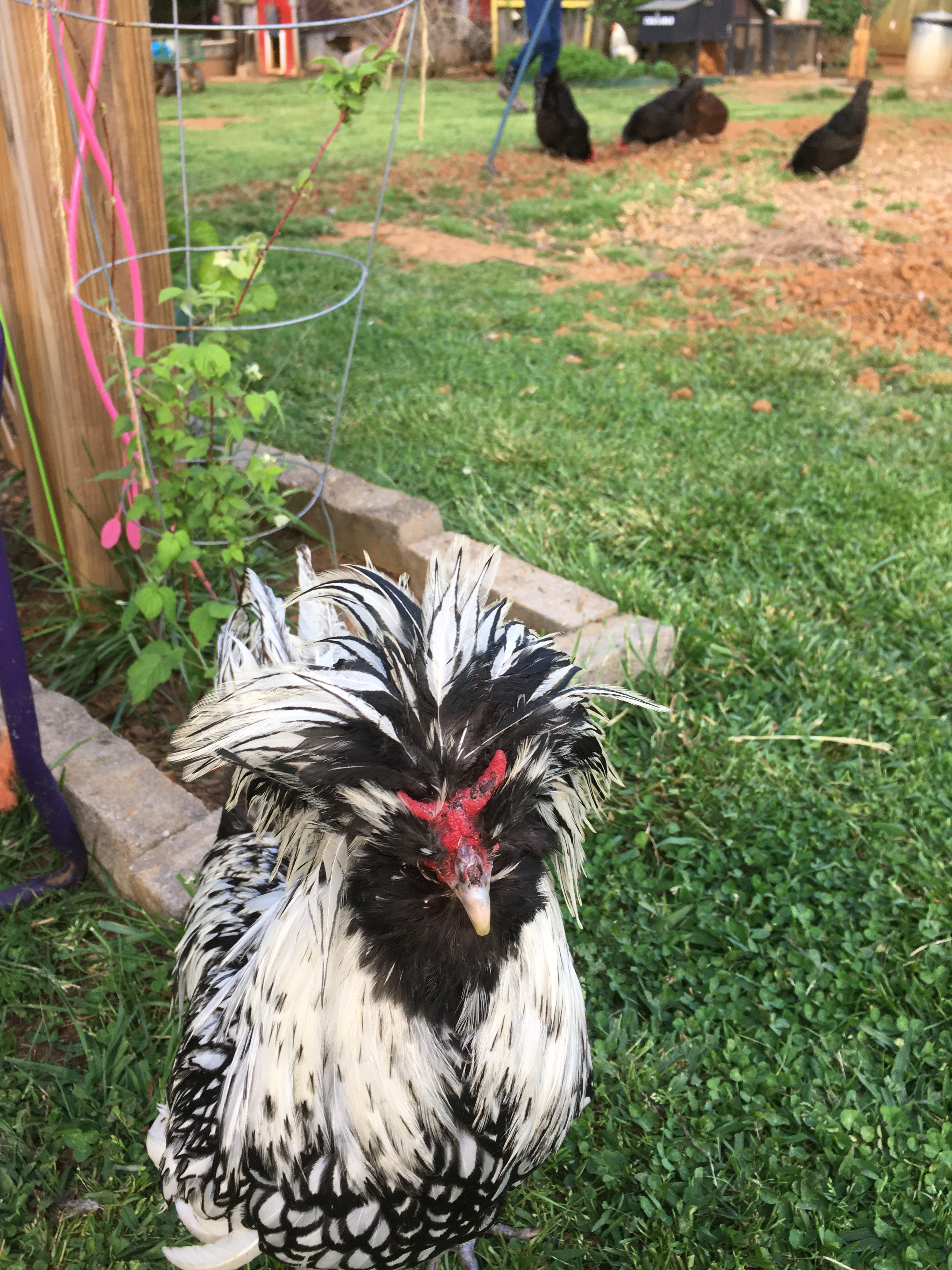
These next guys with the fabulous 80s hair are Polishes. Polishes are my favorite breed, I have more of them than any other breed on my farm. The Polishes are known as the “comedians” of the chicken world. As a breed, they are very curious but high-strung. Due to their fabulous crests, their vision is limited thus everything spooks them. Simple even mundane objects in their environment will startle them. Due to their limited vision, they cannot see what is above them. For this reason, a keeper needs to ensure that they have a covered run. If free-ranging, provide them with ample coverage as protection from aerial predators.
I only allow my polish flocks out when I am in the backyard or have multiple roosters on duty. Polish gents make great roosters for a keeper who does not mind their antics. They are very easy to pick up and hold, due to their limited vision. They are a bit high-strung making them an entertaining breed to own.
All my polish roosters are very sweet, however, curious. Due to the feathered crests, they are a bit jumpy. I talk to them before I pick them up to not give them a jolt. Characteristically, they do not make the best roosters for protection. I have ample coverage in my backyard as a hedge of protection for my polish boys.
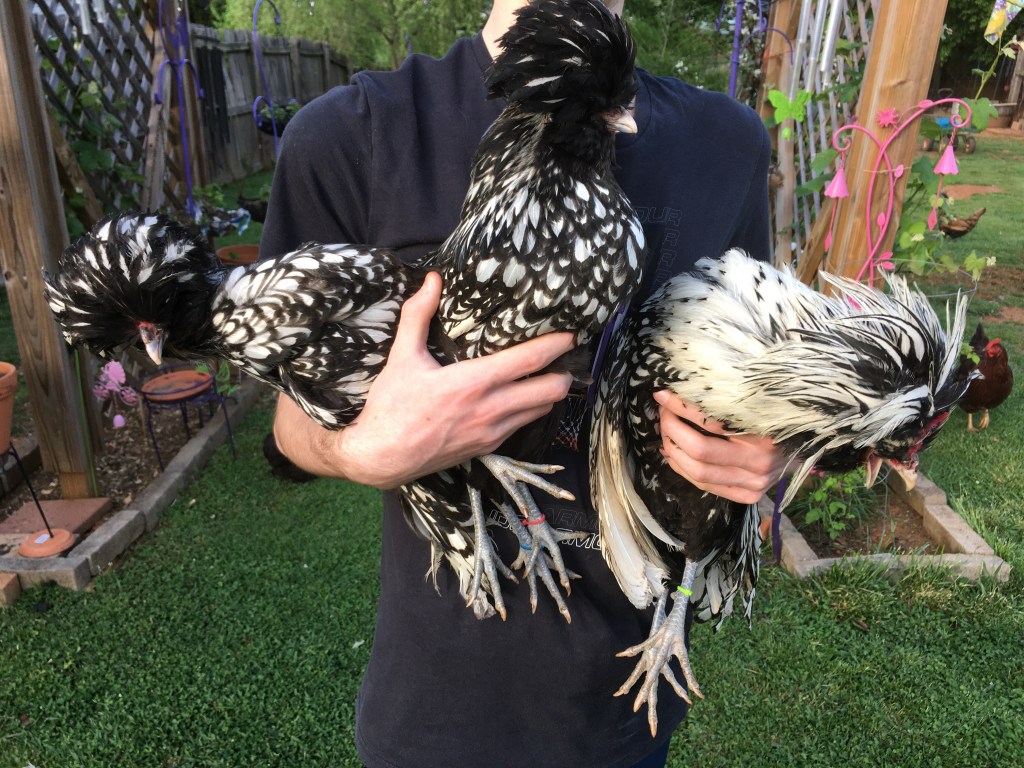
They are very curious, often following their curiosities into predicaments, then not able to see well enough to get themselves out. They are an endless form of entertainment in the backyard. The roosters are a bit high-strung, panicky, and flighty, yet very sweet. I have several Polish roosters, all are very friendly, approachable, and curious. The ladies will often perch on my legs or arms, making them great lap chickens.
Silkie:



Silkies are known as the “Teddy Bears” of the chicken world. Due to their feathers that are “fur-like”, they are the cuddle bunnies of the flock. Silkies as a breed are known the world over for being very docile, friendly, and calm. They have voted time and time again as the best breed to have around kids.
I currently have a flock of 14 Silkies, 4 are roosters. Two roosters are in the coop with the ladies, the rest are in a bachelor pen. My Silkie gents are well-behaved, shy, and timid. The ladies are very friendly and enjoy interactions with their caretakers. I have no trouble with my Silkie roosters. Like the Polish, it’s best to keep Silkies in the protection of a covered coop and pen unless you are outside with them. Due to their overwhelmingly shy nature, they would rather run from a predator than protect the ladies like most roosters. When I hold my silkie roosters, they are very docile and calm in my arms. They would rather hide under a rock but are very easygoing if I need to handle them.
Easter Eggers:


(Easter Egger Roosters)
Next, Dracula and Frankenstein. These two guys are Easter Eggers and although not known as an exceptionally docile breed, these two boys are well-behaved. They are very curious and want in on whatever I am doing. Due to their breed, they are a bit larger than my other roosters. Despite their size, they are very calm and friendly. They do not like to be held, so I only pick them up when needed.
Silver Lace Wyandotte:
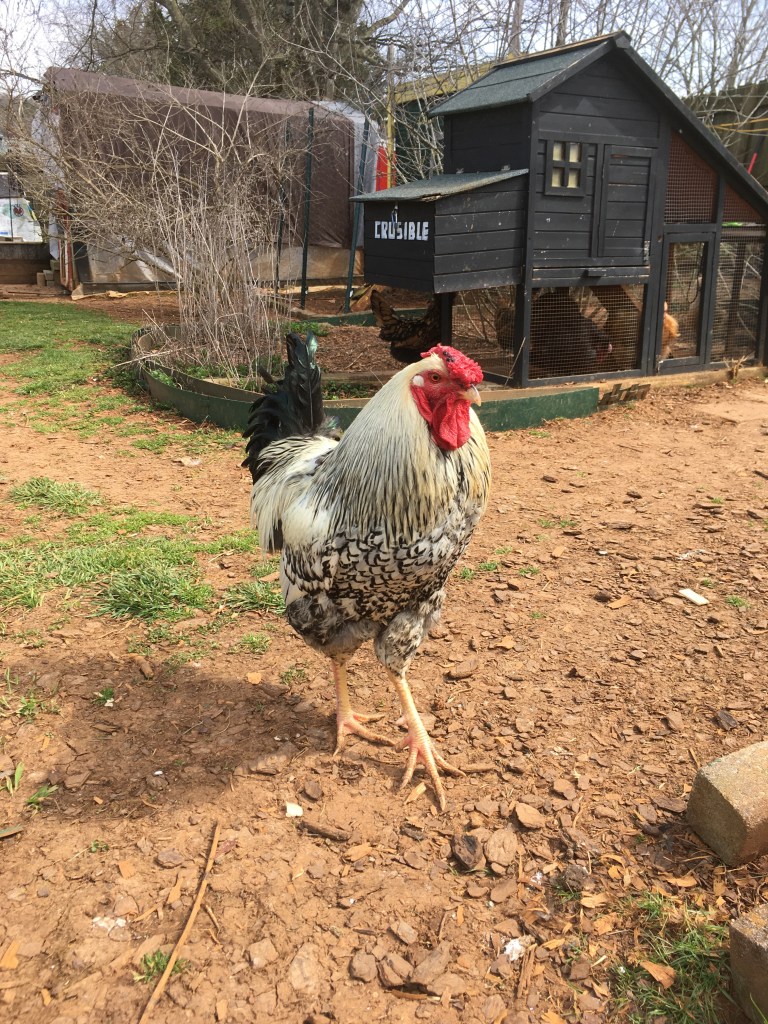
My final breed to highlight is Silver Lace Wyandottes. Wyandottes are a large breed, and Smaug is the largest member of my flock. He easily towers over the other roosters in my flock. At 12 pounds, he is a big boy. Despite his size, he is very calm, friendly, and easygoing. He is best described as the gentle giant of my flock. Due to his very relaxed nature, he is at the bottom of the rooster pecking order. I can easily pick him up and hold him when needed for health inspections. He prefers not to be held but will tolerate check-ups when needed.
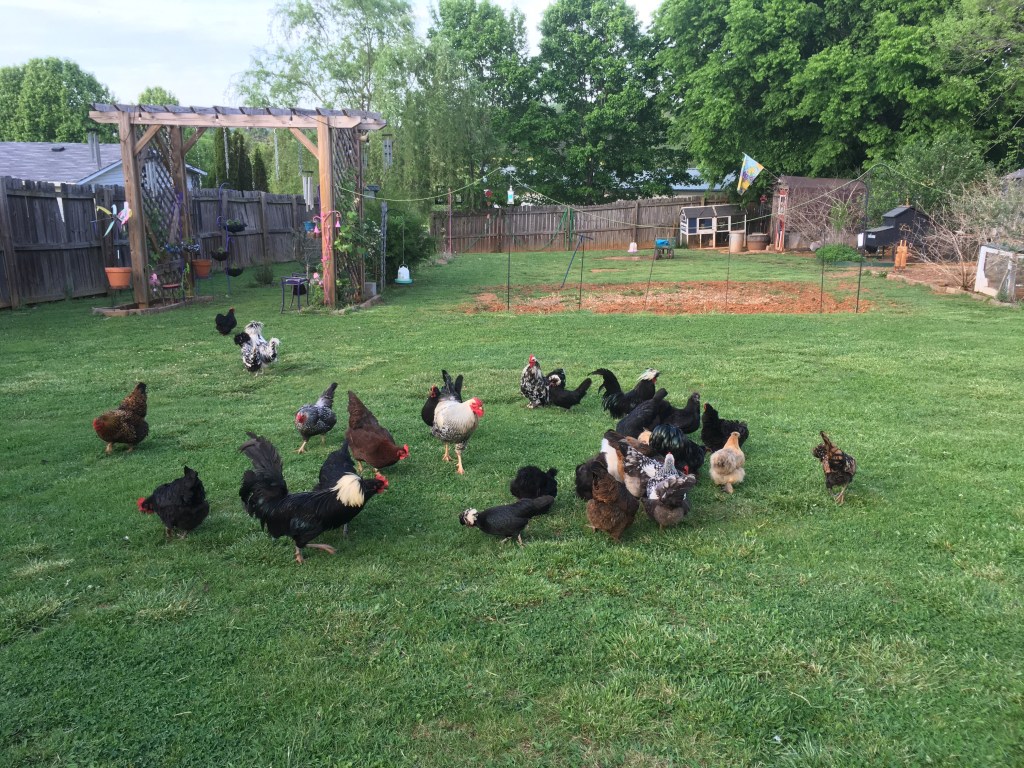
While there are many more breeds available, the breeds listed I keep and can expound on associated temperament and disposition. Most roosters bred today for the backyard keeper are well-behaved. Don’t get me wrong, a rooster has a job to do, and he takes it seriously, but most are calm and friendly. I currently have 13 roosters; all are very well-behaved gents. They take good care of the ladies and are not aggressive to humans by any means. They are often my welcoming committee when I enter the backyard, curious about what treats I may have brought them.

I hope that this post has been helpful for those thinking about acquiring roosters for their flock. It is very possible to have your cake and eat it too when it comes to keeping roosters. Selecting gents from breeds that are well-known for being calm and docile is an excellent place to start. If you have any questions, please feel to leave a comment. You can also drop me a line at kuntryklucker@gmail.com
I am a published author, multi-disciplinary writer, and blog contributor. If you like my work, please visit some of my other sites.
Knowledge of the Spheres – Exploring the Celestial Spheres!
Coffee and Coelophysis – A blog about Dinosaurs
Chicken Math University – Adventures in Homeschooling
If you like this blog, please peck the subscribe button. As always, thanks for reading. Till next time keep on crowing!
~ The Kuntry Klucker Crew ~
